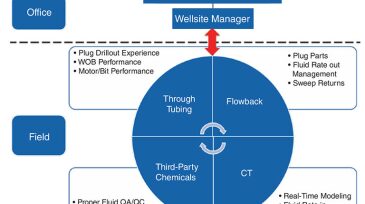horizontal wells
-
This paper presents a factory-model approach to improving CT drillout performance that has been used successfully for more than 3 years and has become standard practice.
-
This paper presents an interdisciplinary approach to the description of tectonic dislocations made on the basis of interpretation of seismic data, petrophysical analysis of well-logging data in horizontal wells, and inversion of a multifrequency propagation tool.
-
The case history presented in the complete paper describes the performance of an acid-fracturing intervention in an HP/HT well in which this intervention was the last procedure considered to evaluate the productivity of a Marrat Formation well.
-
How can operators and service companies go forward in a shale-dominated industry with low oil prices?
-
The oil and gas industry should pay more attention to mature vertical wells but it first must consider technology and cost.
-
Advances made in horizontal and complex-trajectory wells demonstrate that, despite this historic downturn, the industry has kept innovating and optimizing to bring more-efficient solutions to the table.
-
Experience has revealed that frictional pressure loss in the wellbore hinders the full use of the entire length of the horizontal well. This paper presents a new approach to maximize the use of the full length of long horizontal drainholes.
-
This study compares the performance of openhole-packer completion systems with that of cemented-liner completion systems in the northern Montney gas resource play.
-
In horizontal and extended-reach wells in which long completions are run into highly deviated or lateral zones, large compression loads arise because of running friction.
-
Operators continue to look to prolific high-permeability, clastic reservoirs in basins around the world. The use of high-deviation and horizontal well trajectories in these fields improves productivity but increases the challenges of sand control.










